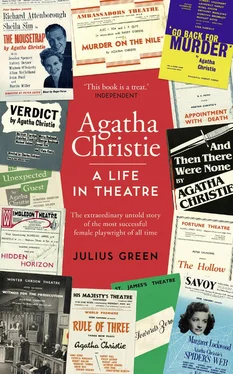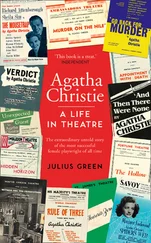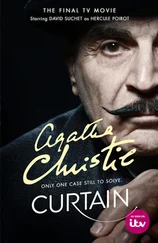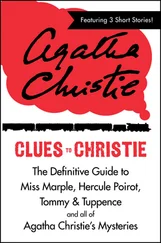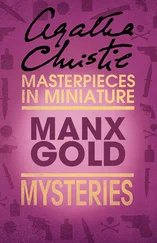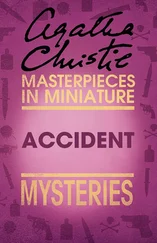An honourable exception is Charles Osborne’s 1982 book The Life and Crimes of Agatha Christie . Osborne, a theatre critic and former literature director of the Arts Council, is less academic in his tone than the writers listed above, but is diligent in affording Christie’s dramatic work equal prominence with her novels. Other than Osborne’s book, the only significant overviews of Christie’s plays in the context of appraisals of her own work are in J.C. Trewin’s lively and opinionated contribution to Agatha Christie; First Lady of Crime (edited by H.R.F. Keating; 1977) and a chapter in Peter Haining’s workmanlike Murder in Four Acts (1990). Two histories of crime drama, Marvin Lachman’s The Villainous Stage (2014) and Amnon Kabatchnik’s epic, five-volume Blood on the Stage (2009–2014), each contribute some original research to the subject, and at least acknowledge Christie’s significance as a writer of stage thrillers if not as a playwright in a wider context. Several of the multifarious Christie ‘companions’ and ‘reader’s guides’ dutifully list the plays and recite the often inaccurate received wisdom about their origins and first productions (an honourable mention here to Dennis Sanders and Len Lovallo’s 1984 The Agatha Christie Companion , which is a cut above many of its competitors); but I have seen ‘encyclopedias’ of her characters which omit completely those which appear only in the plays.
Perhaps most saddening, though, is the fact that Christie has even been eschewed by feminist theatre academics such as those responsible for The Cambridge Companion to Modern British Women Playwrights (2000), meriting not so much as a footnote in the chapter covering the 1950s in a book that purports to ‘address the work of women playwrights in Britain throughout the twentieth century’. Whilst not notable for chaining herself to railings, Christie challenged the male hegemony in West End theatre more successfully than any other female playwright before or since. She took on her male contemporaries on their own terms, and in many respects beat them at their own game. She created a series of strong and memorable female protagonists of all ages, and any actress complaining that there are not enough substantial stage roles for women need look no further than her plays. Most disappointing is Maggie B. Gale’s West End Women (1996). Although Gale’s book, which covers the period 1918–1962, offers a fascinating insight into a neglected area of theatre history, and acknowledges Christie’s commercial success as a playwright, it largely overlooks her contribution in favour of the usual suspects: Clemence Dane, Enid Bagnold, Gertrude Jennings, Dodie Smith and others. This is a missed opportunity in an otherwise excellent book. Gale does, however, make the following interesting point: ‘Research on women playwrights, let alone performers, managers, directors and designers is, in real terms, only just beginning. It is important that we look at what was there, rather than trying to fit our findings into some preconceived notion of what it is that, for example, women should have been writing.’ 18
And, examining Clemence Dane’s work in Women, Theatre and Performance (2000), Gale observes that Dane ‘falls foul of many failings in theatre historiography: the unwillingness to view women’s work in the mainstream; the fear of the “conservative”; and the general lack of interest in mid-twentieth century theatre. It remains quite extraordinary that there is so little critical, biographical and historical material on a playwright so recently working in theatre, a playwright, once a household name, who has somehow been removed from fame to obscurity.’ 19
It could so easily be Agatha Christie to whom Gale is referring that I have gladly taken this as the starting point for my own book. ‘Suffrage theatre’ gets a great deal of attention from historians of women’s writing for the stage, but theatre written by women simply in order to entertain audiences tends to be overlooked. Gender history is a fascinating subject, but the problem with it is that it tends to be written by gender historians. Lib Taylor, in British and Irish Women Dramatists since 1958 (1993), dismisses Christie’s plays solely on the basis that she believes them to exhibit an ‘underlying collusion with patriarchy’. This view is based on a comprehensive misreading of a small number of the later works, and seems to be a common misapprehension amongst academics. And even if it were true, a playwright is surely free to ‘collude’ with whoever they like. In 1983, seven years after Christie’s death, the Conference of Women Theatre Directors and Administrators undertook a major survey of women’s role in British theatre. 20Amongst the many interesting statistics arising from this important exercise was that of the twenty-eight plays written by women produced in the previous year on the main stages of regional repertory theatres, twenty-two (or 80 per cent) were penned by Agatha Christie. More recently, on the eve of her 125th anniversary year, Christie was the only woman with a play running in the West End. It is a shame that the preconceptions and prejudices of many historians of women’s theatre appear to have dictated against a proper analysis of her achievements as a playwright.
Of the two ‘authorised’ biographies, Janet Morgan’s (1984) does its best to examine the importance of theatre in Agatha’s life and work, whilst Laura Thompson’s (2007) marginalises it in favour of an emphasis on the widely accepted thesis that much of Agatha’s work under the pen name of Mary Westmacott was semi-autobiographical. Both contain significant inaccuracies in relation to the plays, the former due mostly to the notorious difficulty of correctly dating Agatha’s correspondence (which Morgan quotes extensively) and the latter due to the author’s evident lack of interest in this area of Agatha’s work. The book you are reading is not a biography; I have had the privilege of being able to investigate in detail a particular aspect of Agatha Christie’s work, and I do not underestimate the task of attempting to chronicle the entire life of such a multi-faceted individual. So if you want to find out more about her personal life, and in particular her family history, then I recommend both of these books.
The journalist Gwen Robyns wrote an unauthorised biography, The Mystery of Agatha Christie , in 1978, based largely on interviews with people who knew and worked with Christie. Although somewhat unorthodox in its approach, it acknowledges the importance of theatre in her work, and is of particular interest in that Robyns appears to have spoken with some of the key players, including Peter Cotes, the original director of The Mousetrap , and Wallace Douglas, who as director of Witness for the Prosecution and Spider’s Web was responsible for two more of Christie’s biggest hits. Whilst inaccurate in a number of respects, Robyns’ book gives a good flavour of the spirit of Christie’s engagement with the world of theatre. As is often the case, though, her list of ‘Agatha Christie plays’ makes no distinction between those written by Christie herself and those which are the work of third-party adaptors.
It is autobiographies, rather than biographies, that provide the most fruitful source of published material for the Agatha Christie theatre researcher. In 1972, Agatha wrote the introduction to The Mousetrap Man , the autobiography of Peter Saunders, who produced all of her work in the West End between 1950 and 1962, including her biggest successes. An entertaining and opinionated romp, it gives an interesting, but nonetheless selective, insight into Agatha’s work at the height of her playwriting career, as well as Saunders’ own views on matters such as investors, critics and his fellow producers. In 1977, Agatha’s own autobiography was published posthumously. Written between 1950 and 1965, when she was aged between fifty-nine and seventy-five, it is a compelling read and gives some fascinating insights into her personality and her love of theatre, but is notoriously selective and not always entirely accurate in points of detail and chronology. Because of its focus on her early life, and the fact that her work as a playwright met with success relatively late in her career, it ironically is not the most reliable of sources on the subject. Agatha’s second husband, the archaeologist Max Mallowan, published his own autobiography, Mallowan’s Memoirs , in the same year. His opinions on his wife’s theatrical efforts are perceptive and insightful, if relatively brief.
Читать дальше
